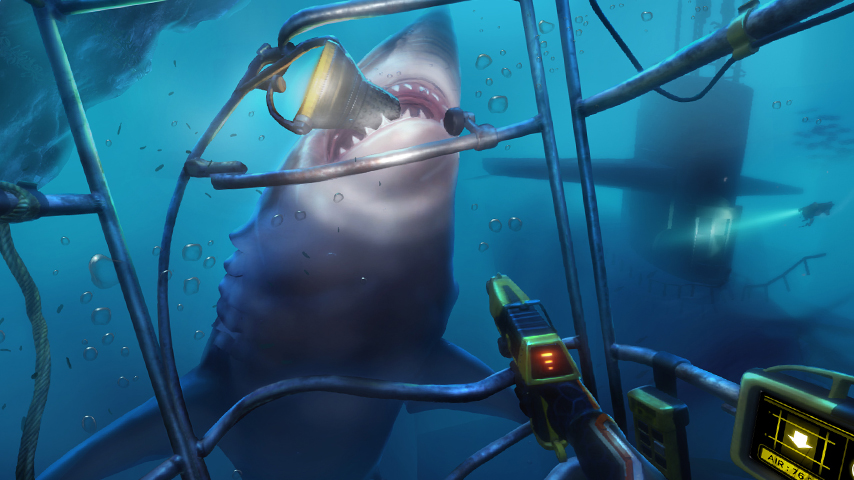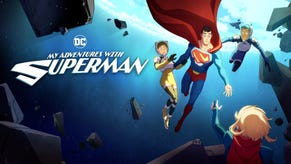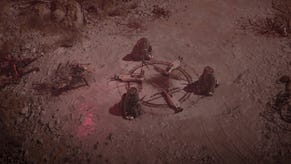Everything you need to know about PlayStation VR: 100 prototypes, screen fidelity, motion sickness and more
VR skeptic? You're not the only one. A year out from release, let's talk to Sony about PlayStation VR, demo software, games, screen quality and puking up.
I'm a VR skeptic. This is partly due to the fact that I've had three demos on the Oculus Rift and felt sick each time. It's also due to being stung by the supposed advancement of 3DTV, Kinect and any other bullshit peripheral that developers called "magical" but turned out to be novelty nonsense that lost support six months from launch.
So I was apprehensive before my demo of PlayStation VR. I expected to feel queasy again and I thought the games would be shallow tech demos. I still have questions and doubts, but I was surprised - really, honestly, surprised at what I experienced.
I'm not a convert just yet, and I'm certainly no evangelist, but I can see potential in VR to create some amazing experiences - somewhere between game and film. I'll talk about the exact games and my thoughts elsewhere, but immediately after my time with PlayStation VR I was offered the chance to speak with Sony London Studios' Dave Ranyard, who's been working on the tech for over 18 months.
Sony London has done some pretty interesting things in the past including Wonderbook, Singstar and EyeToy (and The Getaway), so they're the go-to guys for alternative inputs and experimental games. The interview is off the cuff and I appreciate Dave's honest answers. PlayStation VR won't be out until next year (likely Xmas 2016 at a guess), but let's see where we're at right now with home console virtual reality on the PS4.
VG247: The first thing that struck me was not the VR headset but the Move peripherals. They're really accurate. Are they the same Move wands released back in 2010?
Dave Ranyard: The Move controllers were always very accurate with what they track. Yeah, those ones you've been using have still got the old USB port on them. What it gives you is two hands, and that's so intuitive. As a studio the team has worked through very simple building blocks. We started with the Shark demo and that's been fantastic for audience reaction. It has a lookout system but other than that there's not a lot of game there. Then we did street luge, where you control movement by moving your body. It's mimicking your body's movement, but it's still relatively simple.
"You don't have to learn anything. You know how to use two hands. There's a help system there, but when you're reloading a gun in game, for example, it feels really intuitive to slot a cartridge in the bottom of your gun."
And then we went on to using Move controls. That gave us two hands and we created videos using white gloved magician's hands to pick up building blocks and stack them. Then some designers were juggling them, or we had things where you can throw a ball and someone else can throw it back to you.
These things are very powerful. You don't have to learn anything. You know how to use two hands. There's a help system there, but when you're reloading a gun in game, for example, it feels really intuitive to slot a cartridge in the bottom of your gun.
VG247: It makes sense to me to do it that way even after using a controller with its buttons. The sticks and touchpads, light bar, sensitivity - all this abstract movement that doesn't in any way correspond to what is happening on screen. How far along is the tech for the VR headset? Is it almost complete now?
Ranyard: It's probably not completely finished. In all honesty I don't know but you've seen pictures of the early headsets with move controllers taped up and such. When we announced Morpheus as it was 18 months ago, it was only a few months before that we got those headsets. I'm sure there will be tweaks and things but it's getting closer and closer.
VG247: The fidelity of the screen feels like a big step down to me. Home TVs are pretty incredibly now, but this VR headset - and other's like it - are grainy, the image is never as crisp and sharp as we've become used to. It feels like as much as VR is stepping forward in immersion, it's taking a significant step back visually.
Ranyard: We've really looked at what we can do with the processing power so we're drawing everything at 60 frames per second, twice. It's like doing a two-player 60 fps game on the TV. You've got to make a compromise in terms of speed and so on. You really can't drop [frames per second] that's the big difference. You can't have slow down, that's a big no-no. Sometimes we might have to over-compromise to guarantee that. My take on it, personally, if you look at games from the beginning of a console to the end of a console lifecycle, it's streets apart. Launch titles on a new platform usually look a little bit better than games at the end of the last platform because developers have rinsed it. There will be a lot of that to come - this is first software, it's not even released yet - we're still learning a lot of the basics. We've written an engine just for VR, we started that 18 months ago from scratch. That engine can mature and we'll get a lot more out of it.
"It's like doing a two-player 60 fps game on the TV. You've got to make a compromise in terms of speed. You really can't drop [frames per second]. You can't have slow down, that's a big no-no."
VG247: Fidelity is something you notice as soon as you put the headset on, but then it becomes less important as you play the game, which is the important thing. That's the right priority to have.
Ranyard: We have a demo in the The London Heist where you're shooting over a desk and a lot of people put the Move controllers on the desk at the end. But it's not there, there is no desk in the real world. It's at that point you've forgotten about the graphic fidelity. The logic of your real-world surroundings have gone away.
VG247: Your studio has had more experience than most working with different inputs - the EyeToy, Singstar, Wonderbook, Move. What are the creative challenges of developing games for VR?
Ranyard: Aside from the augmented reality which helps us technically, just having an open mind as a studio has helped. That might sound a bit weird but you'll speak to developers who are "well, we're a first-person shooter studio." Ask them to make something else and they'll say "no, we do first-person shooters." So that open mindset has done wonders.
There's been a lot of prototypes we thought would work but didn't. Some of the really early stuff, where you were on the back of a camel, really didn't. And then things you don't think are going to work, do. Some simple stuff, like having a character look you directly in the eye, when you're using VR, is a really big deal.
VG247: How many prototypes have you been through? How many have you made into something playable?
Ranyard: It's hard to say because sometimes we'll put a few together. The Getaway Heist is several prototypes together. But probably 100 prototypes of different things. There might be a prototype of a system that we take out of The Getaway and put into The Deep. Some prototypes are very small and some are more like a playable chapter. We started with some simple emotional states that eventually we put into Mickey (The Getaway's gangland boss character) and how he reacts to you. By the time we got to this point, there's a lot more subtlety in how his emotions are displayed, and it's got voice acting.
"With a big action movie, it's not action all the way through because it does your head in. There's light and shade. I think that's more pronounced in VR than for traditional games."
VG247: When PlayStation VR becomes a commercial product, do you expect the kind of full-on traditional, 12-hour games experiences we're used to now?
Ranyard: It's an interesting question and I don't know the answer in terms of game length. It is a very immersive experience so whether you need 12 hours and some multiplayer or you can just tell a great story in two hours - we'll have to see how the market reacts.
VG247: You've got to ask if a player is prepared to sit through a certain length of time with a headset on. You must have had testing at Sony - how long do people play before they want to take the headset off? Because there's no where to look away like you can with a TV. It's all encompassing.
Ranyard: Right now we're working on game chapters. To be honest we don't really know and we need to get it out there and see how people use it. When the first trains arrived people said the human body would never be able to travel faster than 30mph. I don't know, in all honesty. What I can tell you is we're making these experiences, we're enjoying them, we're getting in there. For us we're making them a bit longer, we're testing. We're finding that full-on action is pretty tough. Put someone in a battle for an hour and you're going to be exhausted.
We have a London Heist chapter where you're being interrogated and it's actually quite hard. With a big action movie, it's not action all the way through because it does your head in. There's light and shade. I think that's more pronounced in VR than for traditional games.
VG247: That's a good point. Something games struggle with is compelling calm moments. Grand Theft Auto is hours of shooting. Reservoir Dogs is 90 mins long with maybe 4 or 5 minutes of intense action, if that.
Ranyard: It's about the stage management of the game, the level design, orchestrating the action to create a different experience for the player.
VG247: I wasn't looking forward to this because I've felt rotten after using VR before. Nauseous and sweaty. But apart from a few seconds initially with the first demo, I've not experienced that with PlayStation VR. Why is that?
Ranyard: We've spent a lot of time making sure the design works for people and it's an interesting thing. Clearly it can make people sick. What we've found is we can create a great time and not make you sick if we do the right thing. We're all learning what the right and wrong things are. We're testing with loads of people and I'm sure there's lot more to come. I can't give a categorical answer, but what I can say is we're confident we can create really cool experiences that don't have that effect.
Chet Faliszeck at Valve suggested that it's because you're using two hands and also if you feel sick it's due to bad game design...
If it's intuitive it helps. If your actions are predictable and make sense then it all helps. Your brain and body believes it. We're just learning. We're trying our best to alleviate that and we're happy with our results so far but we're doing more testing. We have a few eureka moments and then move on.














